- Solar energy blog
- A bright future for South Africa’s solar power
A bright future for South Africa’s solar power
Read to discover how South Africa’s solar sector is expanding, with a projected market growth of $3.74 billion by 2028, thanks to government grants, pay-as-you-go models, and more.


Martín Rimblas
Strategic Account Executive Sub-Saharan Africa
Strategic Account Executive at RatedPower with expertise in the Sub-Saharan African market. Background in international trade and investment advisory, sales development, and corporate auditing, with strong experience in client relationship management and business expansion across diverse regions.
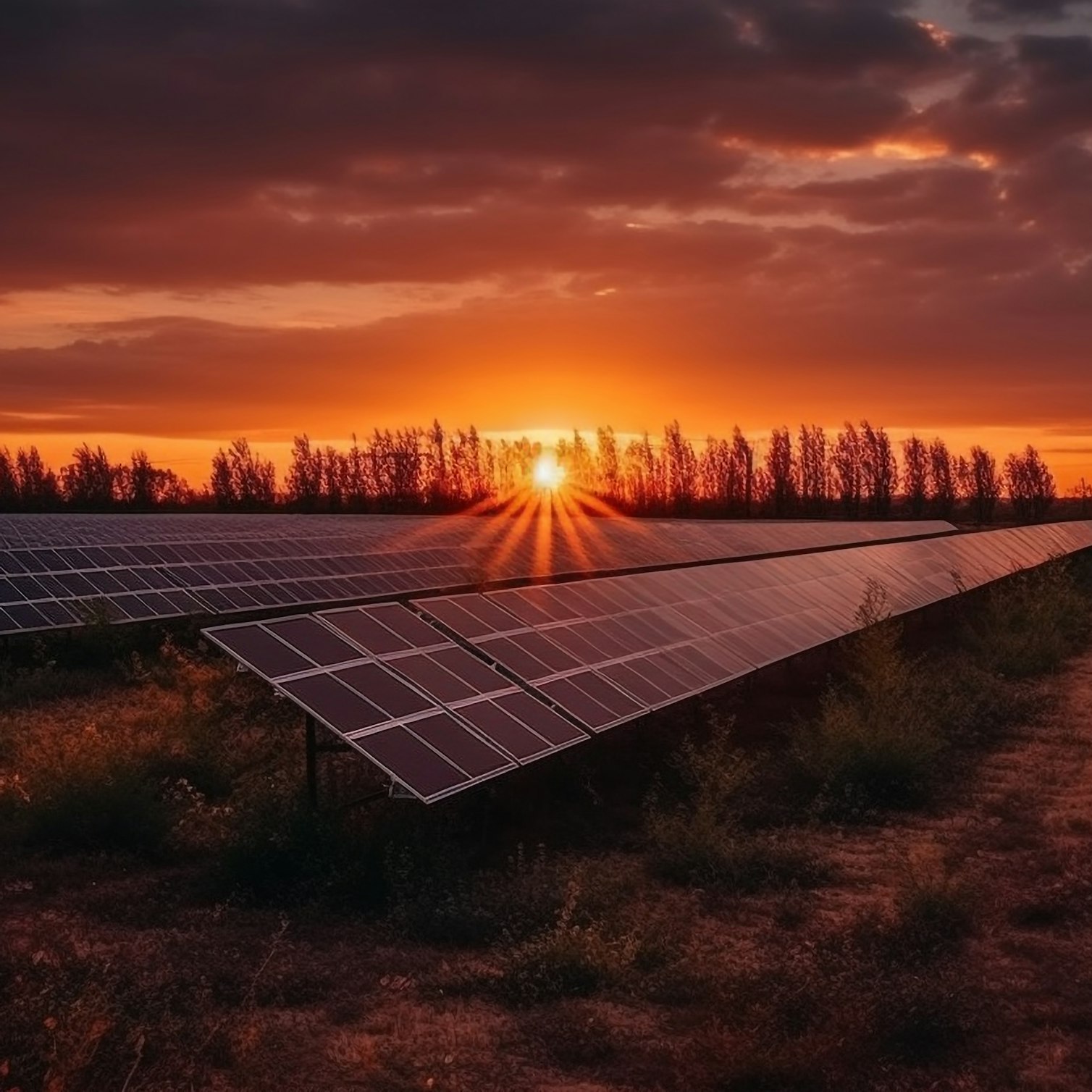
Content
South Africa’s existing electricity system is struggling. Since 2007, the country has faced rolling blackouts, or load shedding, caused by aging coal fired power stations that can no longer keep up with demand. Most of these plants were built between 1961 and 1996, and years of breakdowns, unplanned outages, and supply disruptions from labor strikes have only worsened the problem.
This energy instability has forced both citizens and policymakers to search for alternatives. And solar power is emerging as a practical and promising solution.
With strong government incentives and a surge in rooftop solar installations, South Africa is beginning to reshape its energy future. But what’s driving this solar boom, and what challenges could slow it down? Let’s take a closer look.
What’s powering South Africa’s solar energy revolution?
South Africa’s electricity crisis is forcing both individuals and businesses to take energy matters into their own hands. With load shedding causing frequent disruptions, the country is seeing an unprecedented surge in rooftop solar installations. Rooftop solar photovoltaic installed capacity is estimated to reach 2.31 gigawatts in 2025, up from 983 MW in March 2022.
This forms part of the country’s 8.97 GW of total installed solar capacity as of October 2024, an 11.9% increase from 2023, 2.8 GW from public programs, and 6.1 GW from the private sector.
Want to learn more about how South Africa is poised for a renewable energy breakthrough, with new legislation driving solar PV growth? Boasting excellent solar potential, the country is progressing with major solar projects like Kenhardt and Sirius 1 and plans to meet its 33% renewable target by 2030. Download our eBook to learn more!
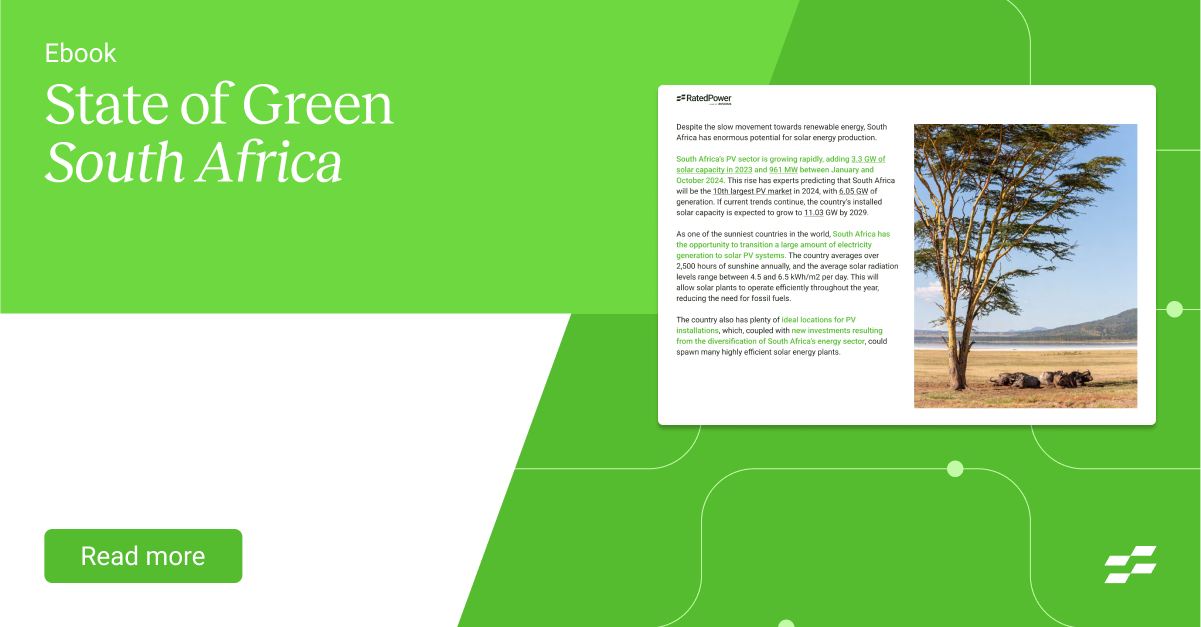
In 2024, South Africa made up 50% of all new solar photovoltaic additions across the African continent, ahead of Egypt (28%), with utility-scale solar projects accounting for nearly 72%. This shift from the previous two years, where commercial and industrial projects led growth, underscores a renewed focus on large-scale solar installations.
What’s behind this remarkable growth? Several forces are fueling this transformation:
Government support
The South African government is driving solar adoption through targeted policies and financial incentives. One key initiative is Joburg’s City Power feed-in tariff program, which allows homeowners and businesses with solar systems to sell excess electricity back to the grid. At rates of 85.50 c/kWh for residential users and 70.85 c/kWh for businesses, this program helps reduce monthly bills while encouraging more investments in solar energy.
Rising electricity costs make these incentives even more attractive. With a 14.97% increase in electricity tariffs, generating your own power has become a practical way to cut expenses. The feed-in tariff program benefits individual households and contributes to a more sustainable energy system by increasing renewable contributions to the grid.
Additionally, the government introduced a tax rebate scheme in March 2023 to lower the cost of rooftop solar installations. Homeowners could claim 25% of the cost of solar panels, up to R15,000, making solar power more affordable for a wider audience. This program, which ran until February 2024, clearly signals the government’s commitment to accelerating the country’s green transition.
In addition to rooftop and solar incentives, in September 2024, the European Investment Bank (EIB) and Development Bank of Southern Africa (DBSA) would lend $220 million to renewable energy projects; this is an additional $400 million on top of what was pledged in 2022.
These combined efforts eased the financial burden of solar adoption, helping South Africans transition to cleaner and more reliable energy sources.
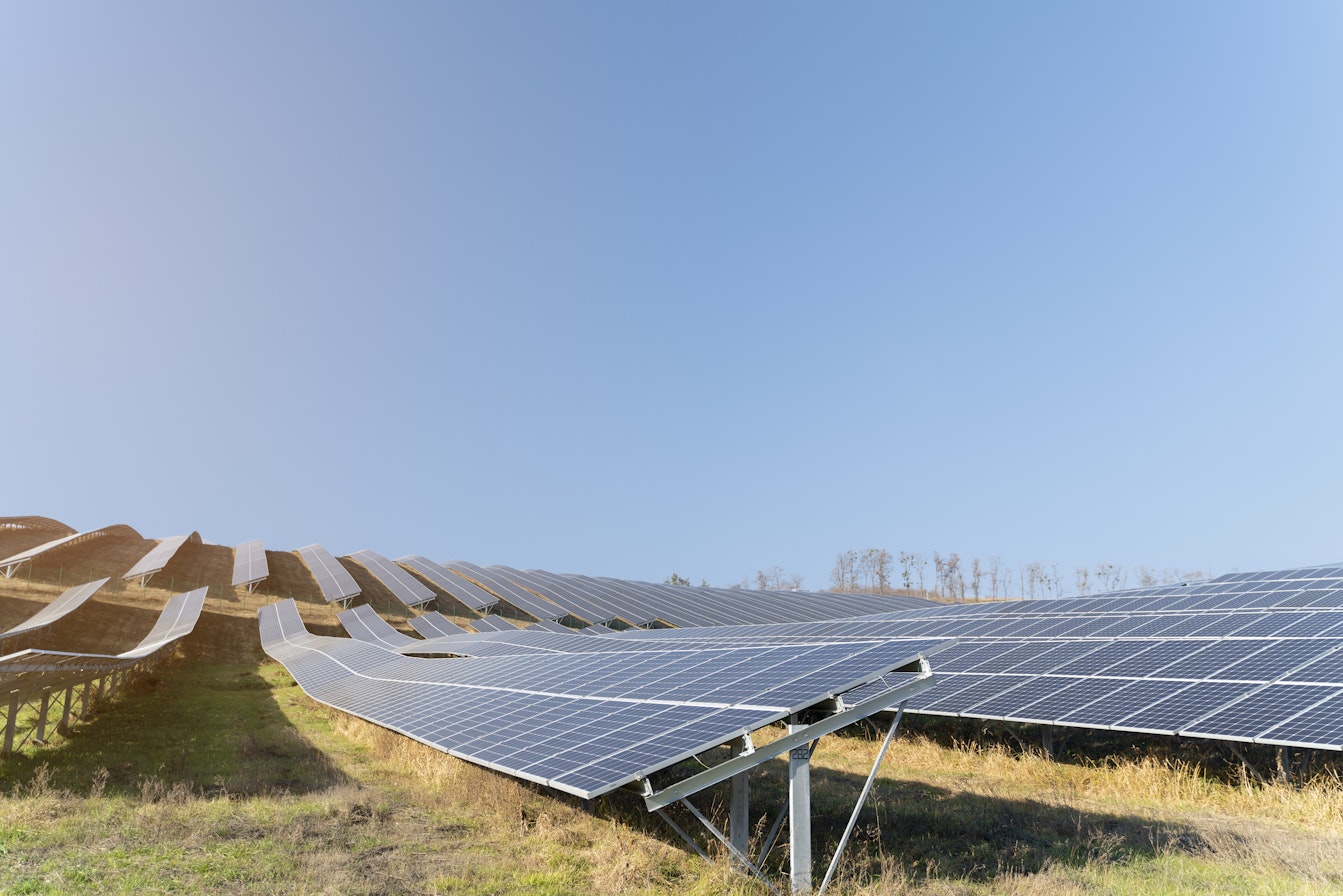
Pay-as-You-Go models
Pay-as-you-go (PAYG) systems are transforming solar energy access in South Africa. These financing models allow consumers to install solar systems without the high upfront costs, instead spreading payments over time. This approach is especially helpful for households and businesses in areas where load shedding is a constant challenge.
PAYG models lower the upfront cost of solar systems, allowing more households and businesses to produce their own electricity. Instead of being held back by the high installation costs or the delays in grid improvements, consumers can access solar energy immediately while spreading out payments over time.
Electricity price hikes have also made these models more appealing. With tariffs continuing to rise, PAYG systems offer a cost-effective way to reduce dependence on the grid. For many, this option provides a practical and flexible solution to ongoing energy instability.
More affordable solar power
The cost of generating solar power is steadily declining, making it one of the most affordable renewable energy options in South Africa. Recent data shows that solar photovoltaic's levelized cost of energy (LCoE) has dropped significantly across Africa and is expected to continue this trend through 2030. As solar becomes cheaper, it’s quickly becoming a viable alternative to traditional energy sources like coal and gas.
This affordability aligns with South Africa’s growing demand for clean energy solutions. The country’s solar market is projected to grow by $3.74 billion between 2023 and 2028, driven in part by the decreasing cost of solar technology.
What’s holding back solar power in South Africa?
Despite solar power’s rapid growth, several roadblocks stand in the way of its full potential in South Africa. Let’s take a closer look at the key challenges that need to be addressed.
Limited grid capacity for new solar projects
South Africa’s electricity grid wasn’t designed for renewable energy. It was built to handle coal, which operates on a centralized system. Solar and other renewables, however, need a decentralized grid that can handle energy coming from many different sources.
This mismatch is already causing problems. Provinces like the Eastern, Western, and Northern Cape, which have lots of solar and wind potential, struggle with grid congestion. In some cases, renewable projects have been delayed because there’s simply no room on the grid to connect them.
Thankfully, steps are being taken to address this. Eskom, the national utility, is introducing solutions like allocating extra grid space and working on upgrades to make the grid smarter and more flexible. Even so, more investment and coordination are needed to modernize the system and avoid future bottlenecks.
Get the latest insights on the renewables sector with our comprehensive report. It includes data from an industry survey and solar simulations on the RatedPower platform. Download now to uncover critical trends and challenges shaping the future.
Energy storage solution
One of the biggest challenges with solar energy is intermittency. That’s where batteries come in.
Batteries can store extra solar power during the day and release it when needed. However, large-scale battery systems are still expensive, even though costs are coming down. Eskom has started building utility-scale battery projects.
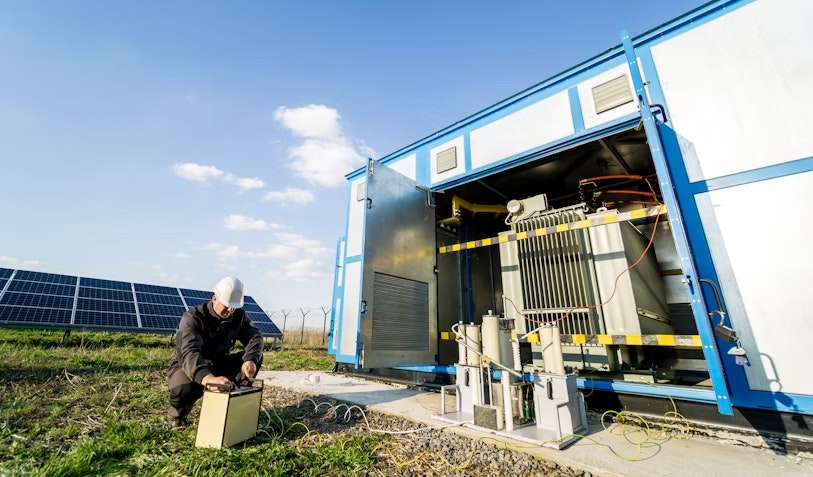
Technologies like pumped hydro (which uses water reservoirs) could be a longer-term solution, but South Africa doesn’t have many suitable sites for such projects. It’s hard to balance supply and demand without affordable and reliable energy storage options, especially during peak evening hours.
Workforce skill gap in renewable energy sector
South Africa’s energy workforce has decades of experience in fossil fuels, but solar is a whole new game. While there are already skilled workers in the solar energy sector, the industry still faces a significant need for additional talent to meet growing demands. Many workers have gained expertise in solar technology, installation, and maintenance, but a larger workforce is needed to support the rapid expansion of renewable energy.
To close this gap, training programs are essential. Upskilling and reskilling initiatives can help coal workers transition into renewable energy jobs. Partnerships between the government, industry, and schools can also make a big difference. Without these efforts, the clean energy sector might not have enough skilled workers to meet its growing demands.
A bright future nonetheless
South Africa is making real progress in solar energy development and tackling the electricity challenges that are slowing their energy transition. While there’s work to do, like improving the grid, expanding storage options, and building a skilled workforce, the momentum is clear. With the right focus and continued effort, South Africa is on its way to creating a more reliable and sustainable energy future.
Latest stories
Related posts
Market analysis
Powering through the peak: Why solar + storage is gaining momentum in MENAT
Discover how MENAT is building a functioning solar economy and why rising peak demand during extreme heat is squeezing its energy architecture.
Updated 11 DEC, 25

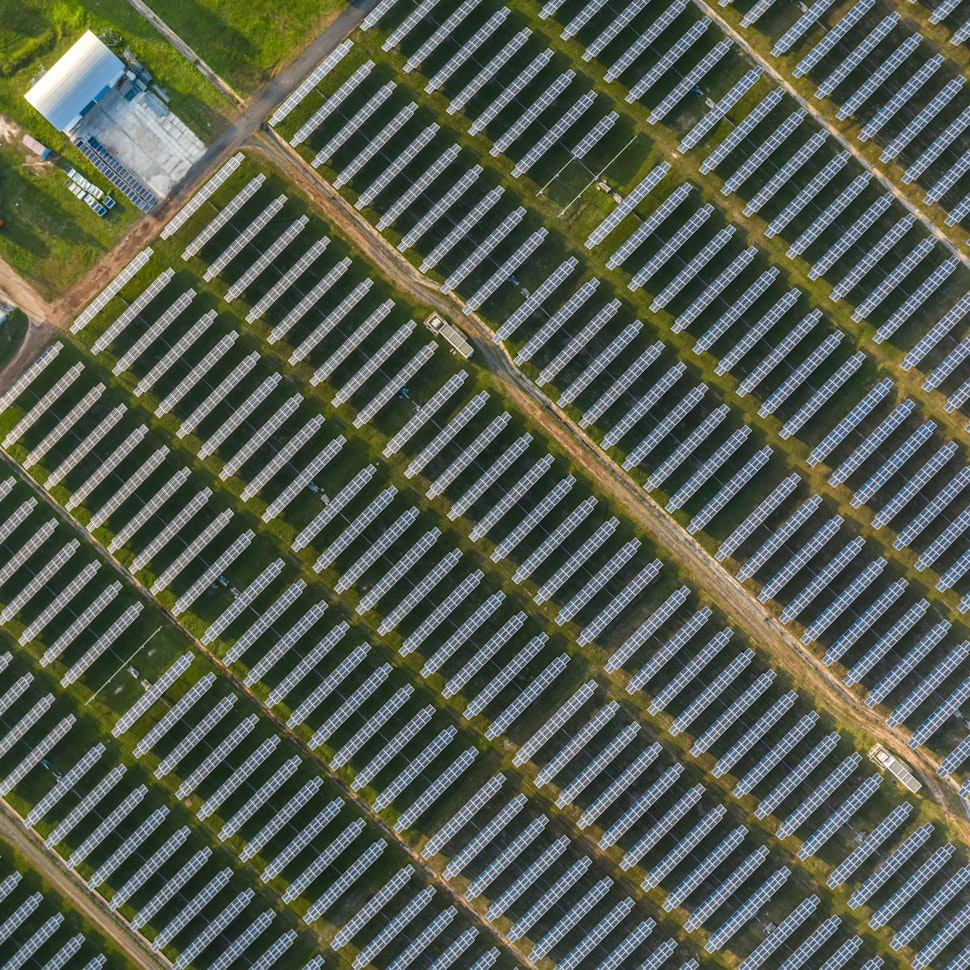
Market analysis
The rise of utility-scale PV + storage plants in Italy
Discover how Italy’s latest policies and auctions are driving utility-scale solar and battery storage projects to meet ambitious 2030 targets.
Updated 4 DEC, 25

Market analysis
From sun to socket: What Iberia’s grid needs to handle 2030 renewable targets
Discover how Spain and Portugal are upgrading their grids to meet ambitious renewable targets and prevent future blackouts.
Updated 25 NOV, 25
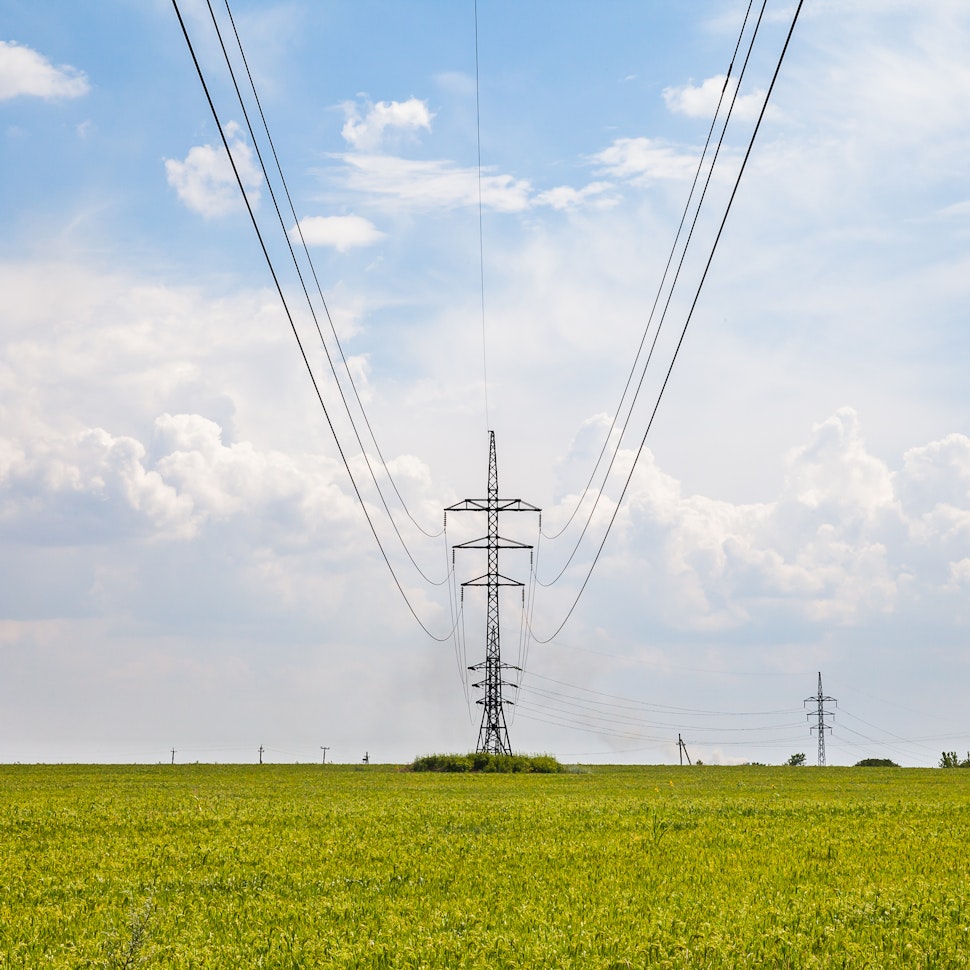
- RatedPower
- Solar energy blog
- A bright future for South Africa’s solar power
 Watch a demo
Watch a demo Ask our AI Product Expert
Ask our AI Product Expert
